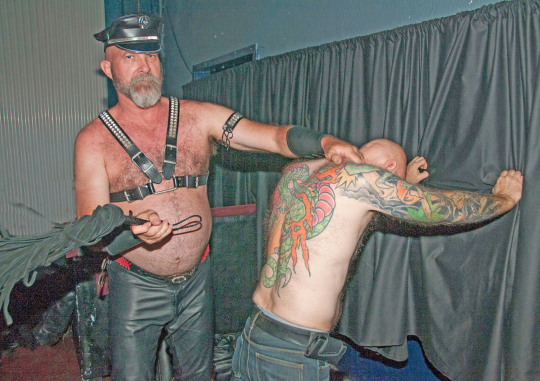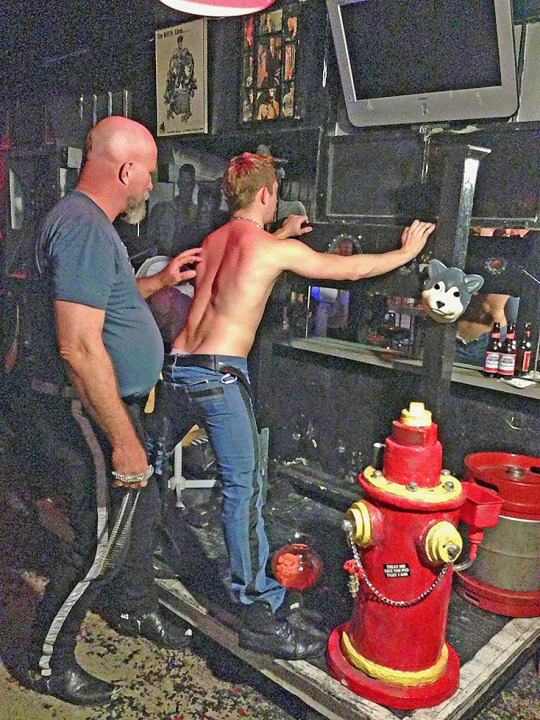Hundreds more articles like this can be found
What is the best way to negotiate limits before starting a scene with a new dom? My inexperience makes me nervous about getting in over my head.
fistfuckgaygr:
I think it can be very helpful for all inexperienced boys to take heed of such a question. I have noted time and time again how important communication is in a domination and submission interaction. Have you ever seen those statements on Recon or Grindr where they say plan to meet up in so many (e.g. 4) messages? That is just crap. If you see these those, run away! You need to establish some sort of trust through the exchange of conversation. It gives you the opportunity to feel someone out and they can learn more about you.
I find it interesting how you use the phrase “negotiate limits.” Limits are typically non-negotiable. Meaning you tell the other party these are not going to happen during a session. For example, I, as a Dom, have limits. Things I will do not with boys, and I am not willing change my mind on them (e.g. unsafe sex).
So here are some general steps.
Step One: Have a conversation with yourself. You need to think about what are things you are not willing do, somewhat willing to do, and absolutely willing to do. When you are new, the number of things you are not willing to do is going to be a long list.
I would recommend that you also flip the limits list into an interest list. In other words, “these are things I want to try.”
Step Two: Build a rapport with the Dom. Before you even talk about limits, you need to build some sort of connection with the Dom. You are building up to the fun.
Step Three: Pre-session rule.If you interaction is based on online connections (Recon, Grindr, A4A, or even Tumblr), you must convey your limits through that online medium. Do not show up at someone’s place and intend to convey limits. You are likely to forget something. Or maybe the session just gets started quickly because you are both very attracted to each other.
Step Four: It can be hard to bring it up. I understand that. A good Dom should always ask what your limits are. If he does not, you can ask him what he intends to do during a session. Just so you know it is normal, I do not typically share with a boy exactly what will happen. I will lay out general things that will happen, but I will not say step by step. It takes the fun out of a session if you know exactly what is coming and when. After he gives you a basic idea you can respond that you are not really comfort with it x, y, or z.
You can also bluntly say, ‘I am new, but these are limits right now…” You can mention that you are interested in exploring new things, but you will need him to talk you through them and you reserve the right to veto that activity.
I would encourage you to be open to new things. You never know if you will like if you don’t try.
Step Five: If the Dom responds that he is in control and he will decide what your limits are. End your conversation with him. He is clearly ill-equipped to work a new sub. New subs require a lot of patience and time.
Step Six: Early in your activities if you are still quite nervous, I would recommend that you and the Dom employ the use of a safe word. I use Red and Yellow. Even though I generally hate safe words, because if I boy has to use one, it means I have failed him. Red means stop everything, the session is over. Yellow means I need a moment this is a little intense. You can also come up with some signal if you are gagged.
Step Seven: Remember to have fun. Submission is suppose to be fun after all. It is suppose to be something you enjoy.
Red and Yellow are, in my experience, universal safe/slow words. I tell boys to use “red” if they need things to end. That ends whatever activity we’re doing and any aftercare as appropriate happens next so I can check in with him and make sure he’s okay. I tell them to use “yellow” if they’re okay with what’s going on, it’s just too intense. It’s a cue to me to dial it back a bit so he can catch his breath and get back into the right headspace. For example, sometimes a whip stroke can land in the wrong place, snapping (no pun intended) him out of that wonderful blissed out happy place. “Yellow” in that instance serves as a reset button.
After you’ve had some experience with the same people, you learn how their body responds and can get a better read on where their head is, and “red” and “yellow” aren’t used as often, if at all. For me, getting to that place is the goal. When you’re finally able to get inside his head is when it gets really fun. :D
But to answer OP’s original question, the best way to establish limits is to talk beforehand. As a dom, I don’t play with anyone until we’ve clearly outlined the following:
1. Any hard limits: these are things that are not negotiable. Both my hard limits and his.
2. Any health issues: things I need to know about to potentially work around to make sure the boy isn’t injured (mentally or physically) inadvertently. Sports injuries, whether he might have asthma, any abuse issues, etc. An example: Face-slapping is a hard limit for a lot of people because of childhood abuse.
3. Whether sex is going to be part of the scene, and if so, how protection is going to be used.
4. What things the boy is particularly eager to try or have done to him. This gives me an idea of where to start planning. Like temptingdominance, I don’t like planning out and discussing every little bit of the scene; surprise and suspense are major elements of sub headspace and are fun to play with.
One thing I’ve found to work is an idea I came up with after seeing how a college professor of mine structured his exams (no, I’m not making this up.) We’d be given a list of 15 topics that could possibly be on the exam. He’d put a random 7 or 8 of them on the exam. We then had to pick 3 or 4 to write about.So, with a new boy, I go over what I have at my disposal to use in a scene (restraints, floggers, dildos, tools for inflicting pain, etc.) and tell the boy to pick somewhere between 5 and 7 things for me to do.
I pick 3 or 4 of them to integrate into the scene and do so at my discretion. I don’t tell him what’s going to be used or when. This way I’m working within the bounds of what I know he’s comfortable with (or at least willing to try), but I can “wing it” and let the scene unfold itself.
After you get some experience under your belt and find a regular play partner, you can start on things that might be “soft limits.” Things you’re potentially willing to try, but have reservations about. When I was subbing regularly, there were things I would normally consider a hard limit, but would consider doing under the right circumstances because it was an act of submission.
What drew me to that particular activity wasn’t the activity itself, it was the good feeling I got from doing something uncomfortable or unpalatable specifically to please someone else. I found that things that are hard limits when you begin eventually become soft limits, and can even turn into things you enjoy. I never in a million years thought I’d enjoy footplay as a top, but
leatherbondagelove introduced me to that and now it’s one of my favorite things.
But I wouldn’t suggest trying to push your limits when first starting out. In the beginning, start small. Work slowly into more challenging things to learn where any limits you might not know about are. Having a dom who is willing to help you explore these things safely and at your own pace is essential. Submission is a gift to be treasured, not an obligation or expectation.
Like temptingdominance said, new subs require patience and time. As a dom, I tend to think it’s worth the patience and time to help a sub explore that side of himself. I’ve been a sub myself, I know how amazing that happy subby headspace can be when you’ve got the right guy to take you there. Being able to give that to someone else is a pretty awesome experience.
service2smmbybj:
communication is always the key, whether you are starting a True Power Exchange or have been in one for many years.
one of the dilemmas for new subs is getting around this issue of asshole “doms” spreading the message that the sub has no say in how things are done. that is outright bullying and should never be tolerated. a sub/boy always has the Power to negotiate things. once those negotiations are finished, limits set, and trust is earned, it gives the sub the freedom to relinquish his Power to his MASTER and then the MASTER can do as HE desires within the confines of the limits that have been set.
of course, your MASTER can, and most often will, push those limits only to help you grow as a sub and explore things you never thought you may enjoy. limits can be re-negotiated at any time, but only you as a sub have the Power to change those limits as you become more comfortable with yourself and who you are as a sub.
one good way that many MASTERs have of negotiating limits, is they have potential subs/boys fill out an application in which all activities are listed and the boy can rank them as far as interest, experience, or set strict hard limits on. this allows the MASTER to know what currently makes the boy tick and gives HIM an idea of areas to explore without having to ask every time service occurs. it is also a good starting point to break the ice and open up verbal discussions, either at the beginning or throughout the hours, days, years of service.

